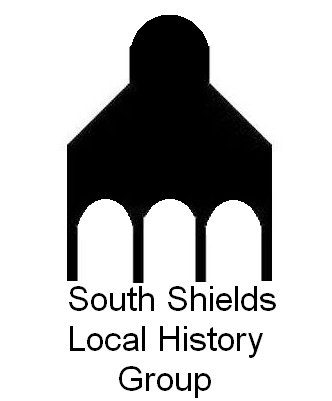South Shields began as a fishing village in the Middle Ages and was in existence by 1235 when there were 24 tenants, all of whom were tenants of Durham Cathedral Priory, a very important monastery founded in 1083.
The priory also owned the farming villages of Westoe and Harton which were part of the monastery’s original endowment. Westoe was the focal point of a manor, which included South Shields and Harton.
In addition, the three communities lay within the chapelry of St Hilda—part of the parish of Jarrow—and worshipped in a chapel at South Shields dedicated to that 7th-century saint; a chapel likely located on or near the site of a short-lived nunnery she had founded.
Life on the manor of Westoe was regulated by the halmote court, which was held three times a year, and one of the presiding figures at the court was usually a senior monk, the bursar of Durham Priory. For the halmotes, tenants of South Shields, Harton and Westoe were elected to serve as jurors for their respective communities.
Halmotes dealt with a variety of matters—admitting new tenants to holdings, imposing bylaws and punishing those who disregarded them, and so forth. In 1364, for example, Richard Burdon, Richard Harper and Robert Benedicite were brought to book for purchasing beer at Newcastle and selling it at South Shields to the detriment of the lessees of the local brewhouse. (W.H. Longstaffe & J. Booth (eds.), Halmota Prioratus Dunelmensis, Surtees Society, vol. lxxxii, 1889, p.32).
Occasionally, some matters were too serious for the halmote court, as was true of the following case cited by the late Constance Fraser and heard at Durham on 26 August 1337. Fraser comments:
Hugh Talkan of Westoe, with his daughter and granddaughter and a neighbour, was taken for a burglary of the prior’s grange [farm] at Westoe and other thefts. They appeared in court and put themselves on their country. A jury was empanelled, which found all but the granddaughter guilty as charged, and they were duly hanged. Hugh’s chattels were valued at 40s. and the neighbour, William Bodi of Westoe, had chattels worth 8s. (C.M. Fraser, ‘The Free Court of the Priors of Durham’ in C.D. Liddy & R.H. Britnell (eds.), North-East England in the Later Middle Ages, 2005, p.113.)
Salt production
In 1635 Sir William Brereton, a gentleman from Cheshire, travelled through the North East and recorded his impressions of the places he visited. Among other things, he was impressed by the extent of salt production at the mouth of the Tyne, where salt making had begun in the late 15th century if not earlier: ‘Here att the Shields are the vastest saltworkes I have seen, and by reason of the conveniencye of coale and cheapness thereof. . . .[there] is such a cloud of smoake, as amongst these workes you cannott see to walke.’ (J.C. Hodgson, ed., ‘The Journal of Sir William Brereton’, in North Country Diaries II, Surtees Society vol. cxxiv, 1913, p.18.)
An indication of the level of salt production can be gleaned from the fact that in the 1640s approximately 3,600 tons of coal was required annually for salt-making at South Shields. In marked contrast, at Sunderland only around 300 tons were used by salt manufacturers each year and the level of production was ‘so modest in size’ that the town did not have ‘its own salt inspector.’(M.M. Meikle & C.M. Newman, ‘Sunderland and its Origins—monks to mariners, 2007, p.116.)
Meanwhile, two years after Brereton’s visit the townsfolk of South Shields called for their graveyard at St Hilda’s to be extended, stating ‘the number of the inhabitants much increasing and the said place groweinge verie populous by reason of the new buildings of salt workes.’ (K. Wrightson, ‘Elements of Identity: the re-making of the North East, 1500-1760’, in R. Colls ed., Northumbria- History and Identity 547-2000 ,2007, p.141.)
During the Civil War of the 1640s, when South Shields witnessed fighting between Royalists and Scottish troops allied to parliament, many of the salt pans were destroyed but after the conflict salt production resumed on a significant scale and remained important into the 18th century.
The Hearth Tax
Interesting information on South Shields during the reign of Charles II can be gained from the Hearth Tax returns. The tax was levied on the number of fireplaces in a house, although the most needy were not required to pay.
The Hearth Tax returns for Lady Day, 1666, i.e. 25 March, show that at South Shields 146 householders paid the tax and 215 did not do so. If one uses a multiplyer of 4.3 persons per household, the town’s population was around 1,552. Incidentally, in Sunderland the number of solvents totalled 115 but, sadly, it is not recorded how many of their neighbours did not pay.
Of the solvents in South Shields, 28 had single-hearth homes and 51 had 2 hearths. There was also a significant number of ‘middling’ homes, for there were 18 dwellings with 3 hearths, 21 with 4, and 12 with 5. Some well-heeled residents had even more fireplaces because 11 houses had 6, and Mary Linton and Robert Anderson had 7 and 8 hearths respectively. The most well provided houses, in terms of fireplaces, were the homes of Richard Row and George Milburne who both had 10—the largest home in Sunderland had 9.
Finally, at Harton 8 residents paid the tax and all of them had more than a single hearth. Indeed, Thomas Atkinson had 5. On the other hand, 11 of their neighbours had single-hearth dwellings. At Westoe, 13 householders paid the tax and their hearths ranged from 1 to 4, whereas 19 other householders were exempt because of their economic circumstances.
Submitted by Glen Lyndon Dodds
10 April 2025
